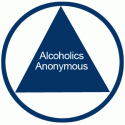Alcohol abuse adds significantly to costs of doing business
Ensuring Solutions has come up with some sobering facts about alcohol abuse and its impact in almost all facets of our society.
Excessive alcohol use by employees and their family members has a substantial impact on the cost of doing business. It costs U.S. employers billions in lost productivity and additional health care costs every year.
Problems associated with alcohol use are not just confined to drinking during work hours – it carries on to the home and family members. Excessive drinking boosts absenteeism, diminishes productivity and contributes to skyrocketing health care costs and relational abuse on all levels.
What is an alcohol problem? Missing a day of work due to a hangover is an alcohol problem. Accidents in which drinking is a factor are alcohol problems. Alcoholism is an alcohol problem. A substance that gives pleasure to most people also kills 100,000 Americans annually, causes serious injury, harms youth, destroys family relationships and plays a significant role in violent crime.
Some 20 to 40 percent of patients in large urban hospitals are there because their drinking has caused or contributed to the illness for which they were admitted. The estimated economic cost of alcohol problems in the U.S. in 1998 was $185 billion – $683 for every man, woman and child. Nearly one in five men and one in 10 women who visit their primary care providers have problems with alcohol.
According to a recent government survey, 6 percent of the adult population drinks heavily, meaning that they drank five or more drinks on the same occasion on at least five different days in the last 30 days.
Analysis of recent government surveys related to substance use and the workplace reveals the true extent of hazardous alcohol use and the negative effect it has on the American workplace. A research team led by Eric Goplerud, Ph.D., the director of Ensuring Solutions to Alcohol Problems at the George Washington University Medical Center, has found the burden of workplace alcohol problems is disproportionately distributed, with industries such as construction, hospitality, education and manufacturing having higher than average rates of alcohol misuse and dependency.
For example, a hotel chain with 20,000 employees operating throughout the U.S. would accrue $8.9 million in alcohol-related health care costs and absenteeism in a single year.
A new analysis of government data finds that 15 percent of employees in the hospitality industry suffer from serious alcohol-related problems. Very few of the employees and their family members ever get help.
Ensuring Solution’s research finds fewer than 10 percent of working people with serious (drink every day) alcohol problems receive any kind of treatment.
There is a relatively simple way to reduce alcohol-related costs and social abuse. By working with health plans, health care providers and employee assistance programs, employers can initiate a proven method to identify and help people who drink too much alcohol.
This method, called screening and brief interventions – or SBI, has been demonstrated to reduce problems associated with excessive alcohol use in a variety of settings, including hospitals, education, and primary care.
In the past, employers have played a significant role in promoting screening and treatment for illnesses like diabetes, heart disease, and depression – all of which were once significantly underdiagnosed. Alcohol problems have a similar impact on the quality of American life and the profitability of American business. Yet alcohol use disorders are significantly underdiagnosed.
By promoting workplace SBI, employers can improve productivity, reduce costs and identify problems before they lead to tragic accidents or expensive health care interventions, not to mention the positive changes that take place in families.
A closing note from former Surgeon General Kenneth Moritsugu: “Research also shows that young people who start drinking before the age of 15 are five times more likely to have alcohol-related problems later in life.”
_______________
source: Lubbock Avalanche-Journal
